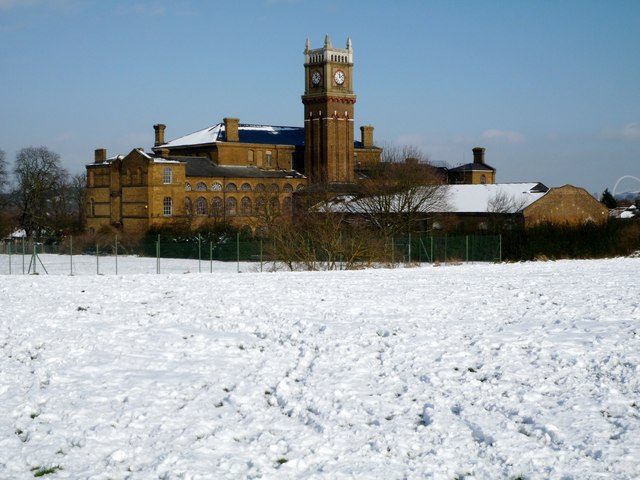Hanwell Community Centre
Introduction
The photograph on this page of Hanwell Community Centre by J Taylor as part of the Geograph project.
The Geograph project started in 2005 with the aim of publishing, organising and preserving representative images for every square kilometre of Great Britain, Ireland and the Isle of Man.
There are currently over 7.5m images from over 14,400 individuals and you can help contribute to the project by visiting https://www.geograph.org.uk

Image: © J Taylor Taken: 3 Feb 2009
Begun in 1856, the Central London District Poor Law School in Hanwell London housed and educated disadvantaged and orphaned children from Central London in the countryside. The Hanwell School closed in 1933. Hanwell Community Association moved into the building in 1938 and has leased the building ever since. Because of the size of the building it became a Municipal Community Centre in 1942 to serve the people of the London Borough of Ealing and the surrounding area. In 1992 the Community Association became Hanwell Community Centre Ltd, a Charitable Company limited by guarantee when a 10 year lease was negotiated with the London Borough of Ealing. The most famous Hanwell inmate was Charlie Chaplin who, together with his older half-brother Sydney, was admitted in June 1896 and stayed until January 1898. Many of the peripheral buildings have been demolished, but the main block and former dining-hall survive. The surrounding lands have been developed into a housing estate. The gym (former dining-hall) was featured in the film Billy Elliott. During June and July 1969 Deep Purple would use the Hanwell Community Centre as a rehearsal room. "Child In Time" "Hard Lovin' Man" came from the Hanwell jams. In March 2009 a £3 million refurbishment will begin. The foundation stone of the building was laid on 11th September 1856, by Mr. Deputy R. B. Whiteside, Vice-Chairman of the Board of Management, for the Central London District Schools in the absence of the Rev. Dr. Russell, Chairman of the Board. Designed by the partnership of Tress and Chambers, it was built between 1856 and 1861 at a cost of £45,000. The Hanwell School, which also became known as the "Cuckoo" Schools (after an old name for the area), received their first admissions at the end of 1856. A total of 1,200 children could be accommodated on the site. The T-shaped entrance and administration block is all that remains today. It contained a board room and various offices on the ground floor, with a chapel and bedrooms on the floor above. In the wings to each side were dormitories and day rooms, with boys accommodated at the west side and girls at the east. In 1890, the front of the main building was cut through with open spaces to produce separate "houses". Each house contained three floors on each of which was a corridor, two dormitories and a lavatory. Each dormitory had space for between 22 and 49 beds. At the rear of the administration block, a large water tower held 40,000 gallons which was supplied from a well 375 feet deep and pumped up by steam engine in the basement. By 1900, the school had its own sewage and gas works and a lodge house at the end of the present Home Farm Road. To the rear of the main block the boys' and girls' playing-yards were separated by the single-storey dining-hall with kitchens, laundry, workshops, boiler room and officers' quarters to its rear. For many years, activities of the children were organised in two "divisions", the working division and the school division. Up to the age of 9, children stayed in the school division and thereafter spent alternate days in each division. In the school division, they received basic education in literacy and numeracy. By the 1890s, the older boys were being taught history, geography and science. In the working division, they were divided into groups to learn and perform various occupations. For the boys this included tailoring, shoemaking, cleaning, farming and gardening, painting and glazing, carpentry, blacksmithing, and baking. The girls performed needlework, cleaning and attending the dormitories, nurserymaid work, cooking, scullery and dairy work. Notes attributable to: www.workhouses.org.uk [email protected] The Hanwell Community Centre website: www.hanwellcommunitycentre.com/ The Deep Purple Appreciation Society www.deep-purple.net/archive/a-z/hanwell.htm

